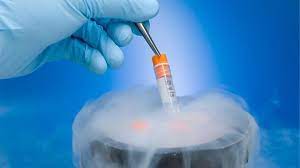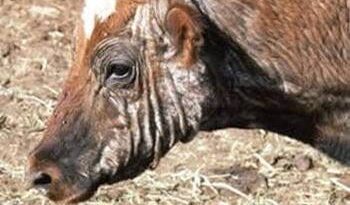Cryopreservation Techniques in Farm Animals
This article will treat in general the concept of cryopreservation, the steps and techniques as a reproductive tool in farm animal management. Cryopreservation is a process where cells or whole tissues are preserved by cooling to sub-zero temperature, typically 77K (= -196°C, the boiling point of liquid nitrogen). At these cold temperatures, all biological activity, including the biochemical reactions that would cause cell death, is effectively stopped.
However, if cryoprotectant solutions are not used, the cells being preserved are likely to be damaged due to freezing during the cooling or thawing process.
Generally, cryopreservation is easier for thin samples and small clumps of individual cells, because these can be cooled more quickly and so require lesser doses of toxic cryoprotectants. Therefore, cryopreservation of human livers and hearts for storage and transplant is still impractical.
Nevertheless, suitable combinations of cryoprotectants and regimes of cooling and rinsing during warming often allow the successful cryopreservation of biological materials, particularly cell suspensions or thin tissue samples. Examples include:
Semen in semen cryopreservation
Blood
Special cells for transfusion
Stem cells. It is optimal in high concentration of synthetic serum, step wise equilibration and slow cooling.
Umbilical cord blood
Tissue samples like tumors and histological cross sections.
Eggs (oocytes) in oocyte cryopreservation
Embryos that are 2, 4, or 8 cells when frozen in embryo cryopreservation
Ovarian tissue in ovarian tissue cryopreservation
Plant seeds or shoots may be cryopreserved for conservation purpose. Additionally, efforts are underway to preserve humans cryogenically, known as cryonics. For such efforts either the brain within the head or the entire body may experience the above process.
Cryonics is in a different category from the afore mentioned examples, however, whole countless cryopreserved cells, vaccines, tissues and other biological samples have been thawed and used successfully, this has not yet been the case at all for cryopreserved brains or bodies.
Cryopreservation of Cells – Steps and Techniques

Cultures to be cryopreserved should be healthy, free from contamination, and should be maintained in log phase growth for several days before freezing.
Grow attaching cell culture to late log phase, trypsinize and centrifuge. If freezing suspension cells, only centrifugation is necessary.
Resuspend cells in sterile serum-containing culture medium containing 10% v/v dimethylsulfoxide (DMSO). Work should proceed quickly to minimize the length of time the cells are exposed to DMSO in the liquid state.
The highest purity DMSO should be used and preferably, it should come from a bottle that has not been previously opened or exposed to light for long periods of time.
Place the appropriate volume and cell number into cryopreservation ampules – usually 2×106 cells/1ml ampule. Plastic or glass ampules may be used.
However, plastic ampoules with external silicone seals function best when kept above liquid nitrogen temperature (i.e. in the vapor phase). Immersion into the liquid nitrogen phase can result in liquid nitrogen entering the ampule spraying out during the defrosting procedure. If storage in liquid nitrogen is preferred, plastic ampules with internal “O” rings perform satisfactorily.
Read Also : Heat Detection Methods and Signs in Farm Animals
Glass ampoules offer the best result due to the secure seal and the rapidity with which the ampule can be defrosted, thereby allowing for higher culture viability. However, they can be inconvenient to use due to the requirement of flame sealing.
Place the ampules in a controlled-rate freezer and cool at a rate of 1°c/minute. If a controlled-rate freezing apparatus is not available, adequate results can be obtained by:
Placing the ampule inside a 1-inch foam-insulated box and keeping the box at –70°C for 12 hours.
Cooling the ampules in the liquid nitrogen phase using a liquid nitrogen canister insert.
Placing the ampules in an isopropanol bath that is subsequently cooled in a -70°C freezing.
Placing the ampoules directly into a -20°c freezer for several hours and then transferring to a -70°C for further cooling.
Placing the ampules directly into a -70°C freezer.
The last two methods (d and e) are not ideal since the culture viability can be affected and result in the loss of sensitive populations. These methods should only be used when no other options are available.
After freezing, the ampules should be transferred to a liquid nitrogen-filled storage vessel. Prolonged storage at temperatures above -135°C will result in decreased viabilities.
In summary, cultures to be cryopreserved should be healthy, free from contamination and should be maintained in log phase growth for several days before freezing. This technique is important in preserving germ cells over long periods of time.
Read Also : 10 Amazing Health Benefits of Cucumber Fruit









